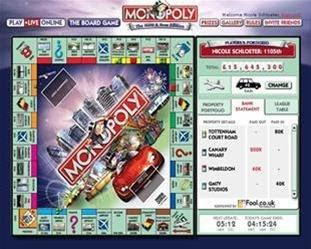Buon giorno. I've sat through a few award show debriefs recently and thought I'd ping you the latest. First up, dead simple print (hurrah!). Burger King has a USP over other burgers. It's flame grilled. What's the simplest demonstration of that? How about genuine photos of their restaurants that have caught fire as a result...
And you can see a couple more of the executions here.
So. This next one was the biggest winner at Cannes this year. And it's been pointed out, it's THE most offline execution possible. The statue of the Fearless Girl. McCann made a bronze statue of a little girl and placed it so it was staring down the Wall Street bull - to highlight an investment company which specialises in funds with a high proportion of women leaders.
Check out the case study:
A bold initiative to get gender on the agenda? Or a cynical play for the judges' attention? I dunno. But apparently, this started as a B2B print brief: let other companies know that this fund does well because it has more women on the board. Cynical or not, it's a hell of a response to something that should have been a half page trade press ad...
Sculpture seems to be the in thing this year. This next one is Graham. He's an artist's impression of what a human would need to look like if he was born to survive a car crash.
Up next, the second of three appearances for Burger King. Nice direct idea, again dramatising the flame grilled difference. Here's everything you need to make a Whopper at home. You just have to provide the magic ingredient yourself...
Now, you've heard me go on about 1:9:90 ideas. This is like, No one:9:90. It's fantastic, but the chances of it working for more than a handful of people is ridiculously tiny. But true to the formula, just getting it out there is enough to catch the attention of millions... This relies on you having one of those Google Home 'assistants' near enough to your TV speaker when the ad is running.
I love this next one. Dead simple but dead smart. Get kids to want to advertise milk and in the process, turn their casts into a new media format.
Come on then. Let's get digital. Couple of relatively simple ones to start with. Snickers has a campaign idea of 'You're not yourself when you're hungry'. So eat a Snickers and you'll get back to normal. There is also an expression the kids use these days of being 'hangry' - that grumpy state you get in when you're hungry. So Snickers set out to help the angriest people in the world; which is everyone on the internet.
It doesn't really come out in the case study, but this next one has a wonderful insight. The Sydney Opera House is one of the most photographed buildings in the world. But no bugger goes inside (and spends any money). So this idea uses Facebook tagging. When people tag that the building in their snaps, they get an instant response in their feed, inviting them inside...
Okay, brace yourself. You may or may not have concerns about this next idea. Frankly, it scares the living piss out of me. This is what it takes to win the digital category at Cannes. To launch a service that helps to launch digital businesses, this idea created and promoted NINE fake services. On the understanding that a clever use of search engine optimisation would lead everyone back to the real thing being advertised.
Nine. Nine entire, fleshed out campaigns, to launch one digital service. Was there a simpler way? Hell yes, I can think of loads that would take way less effort. But then, that's why I have a job signing off copy for leaflets and this smashed the Cyber Lions category.
This is kinda smart for a cheap phone company. It set out to help its target audience 'boost their voice' at the most perfect moment in history to do so...
And finally, a moment of light relief. I have no idea if this won anything or not but I love the insight. Look at any online reviews and someone will have put in a half arsed, pointless comment. What if you treated that comment as the epitome of the copywriter's craft and used it as your advertising line?
What would Tony Brignull say to this, I wonder?











